Книга - "The Encyclopedia of Playing Card Flourishes" (слейтинг)
Thumb Fan
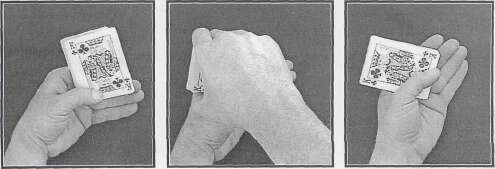
Figure 3-10 Figure 3-11 Figure 3-12
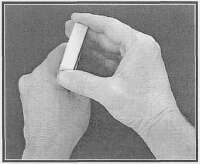
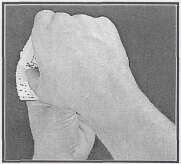
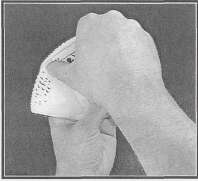
Figure 3-13 Figure
3-14
Figure 3-15
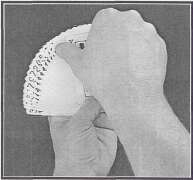
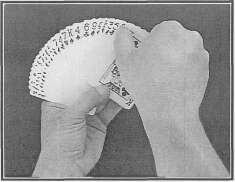
Figure 3-16 Figure 3-17

Figure
3-18
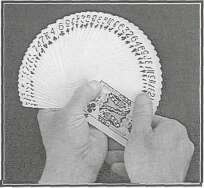
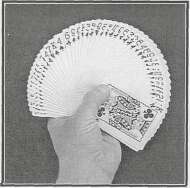
Figure 3-19 Figure 3-20
This is the second most common way to fan a deck, although I personally seldom use it for a regular fan with regular cards. The Pressure Fan is just too good, and allows for better fans with worn, underpowdered or dirty cards. Pressure fans themselves take a gradual toll on the cards, though. With expensive exhibition fanning decks, the Thumb Fan is a card-saving substitute. Thumb fans don't bend the cards like pressure fans. So, while the Thumb Fan needs a pack in better condition, it rewards you by preserving that condition. Conversely, the Thumb Fan done with poor cards will elicit punishment in the form of messy fans.
My version of the Thumb Fan uses the right index and second fingers to help control the deck from the other side of the fan and is thus more precise than methods where the right thumb is the only finger touching the cards. If you think the Thumb Fan looks more elegant using just the thumb, please see the next fan, the Finger Fan, or do the Finger Fan with the thumb. In fact, one of the few decent flourishes in the Chavez Course (there are many, many useful magical production moves in the Chavez Course) is a pretty finger fan. My version of the Thumb Fan is a utility move to make a fan rather than something where the focus is on the process of making the fan. Put another way, the Thumb Fan is an efficient way to make a precise fan, while the Finger Fan is an elegant way to make a slightly less precise fan.
From dealing position pull the deck up high in the hand (Figure 3-10), just as you did with the Pressure Fan. Now, cock the deck to the left until it can go no further (Figure 3-11). This will give you the widest possible fan. Figure 3-12 shows the position with the right hand removed. The next picture, Figure 3-13, is a side view of how the right hand grips the pack during this preliminary cocking action and throughout the fan. The right index finger and second finger are pressing on the long side of the deck exactly opposing the right thumb. Note also that the right thumb tip is flush with the rearmost of this face-up deck.
Move the right hand in
a clockwise arc (Figures 3-14 to 3-20), maintaining moderate pressure
with the right index finger and right second finger at the right long
side, and firm pressure with the right thumb at the left long side.
As the arc progresses, flatten the thumb against the unfanned portion
of the deck to bevel it. Don't think of yourself as trying to deposit
the cards one by one with the thumb. Rather, picture the cards beveling
and spreading under pressure from all sides. Some people make successful
thumb fans by applying enough pressure with the thumb to really press
the deck against the left fingers to get some of this beveling/spreading
action.

